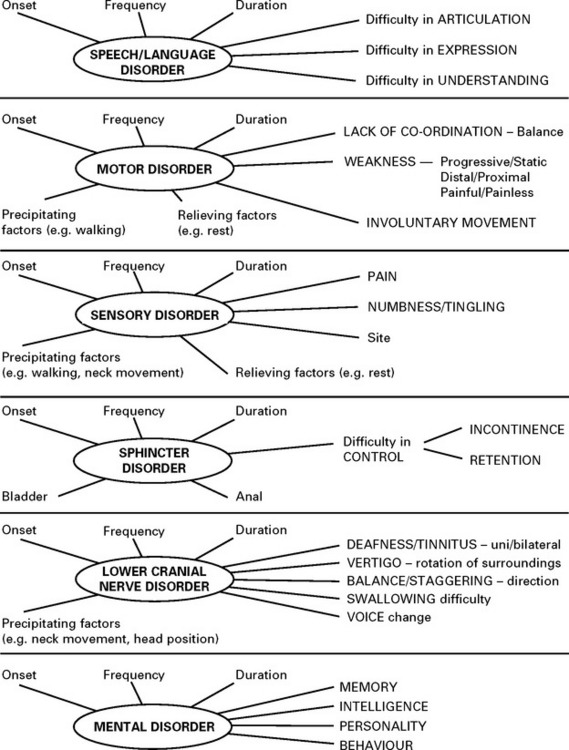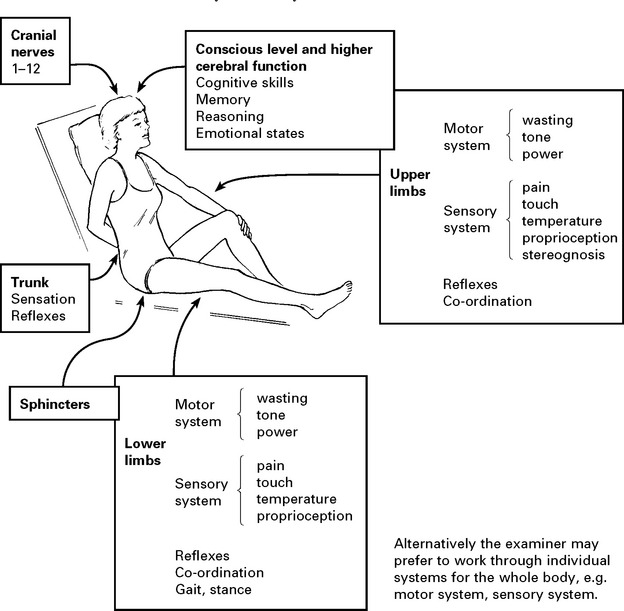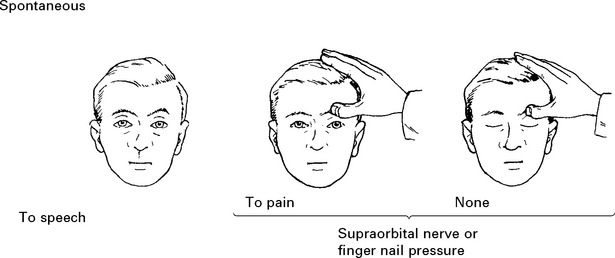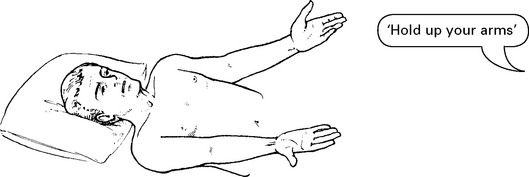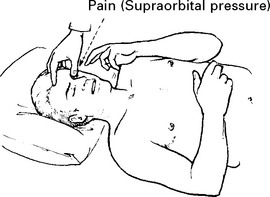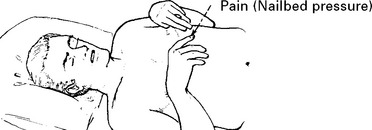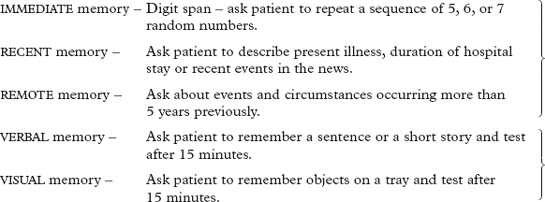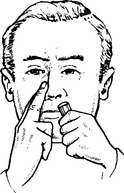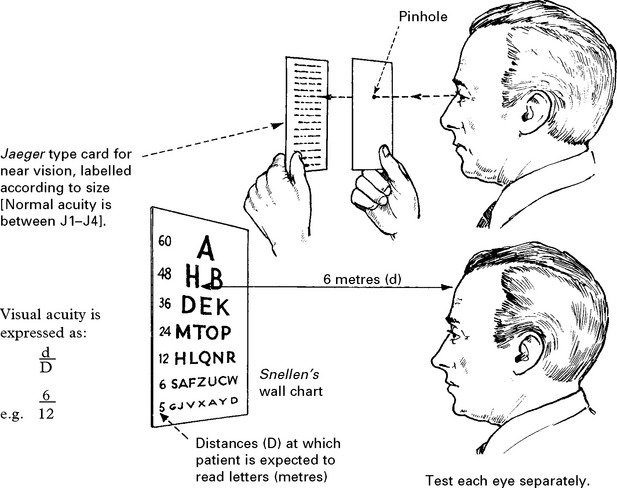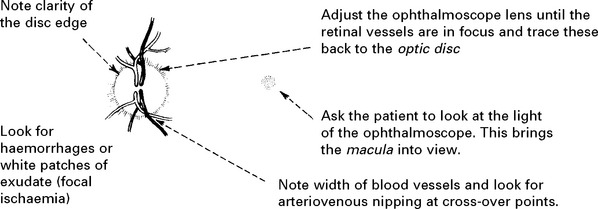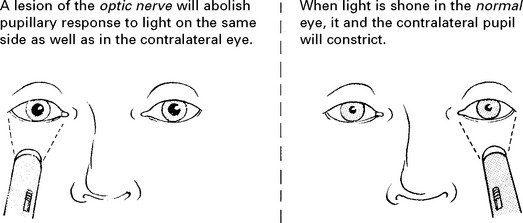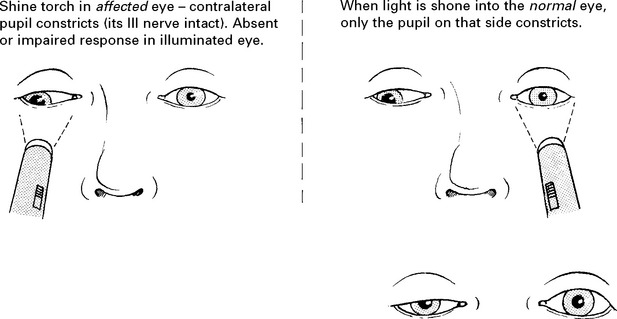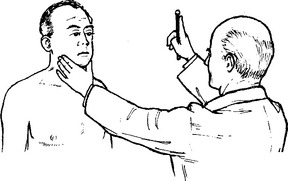SECTION I GENERAL APPROACH TO HISTORY AND EXAMINATION
NERVOUS SYSTEM – EXAMINATION
Neurological disease may produce systemic signs and systemic disease may affect the nervous system. A complete general examination must therefore accompany that of the central nervous system. In particular, note the following
CNS examination is described systematically from the head downwards and includes:
MOTOR RESPONSE – 5 categories
EXAMINATION – HIGHER CEREBRAL FUNCTION
COGNITIVE SKILL
e.g. ‘Hold up both arms, touch the right ear with the left fifth finger.’
Non-dominant hemisphere disorders
| Note patient’s ability to find his way around the ward or his home. | Geographical agnosia |
| Can the patient dress himself? | Dressing apraxia |
| Note the patient’s ability to copy a geometric pattern, e.g. ask patient to form a star with matches or copy a drawing of a cube. | Constructional apraxia |
Mini Mental Status Examination (MMSE) is used in the assessment of DEMENTIA (page 127).
REASONING AND PROBLEM SOLVING
Ask patient to reverse 3 or 4 random numbers.
Ask patient to explain proverbs.


